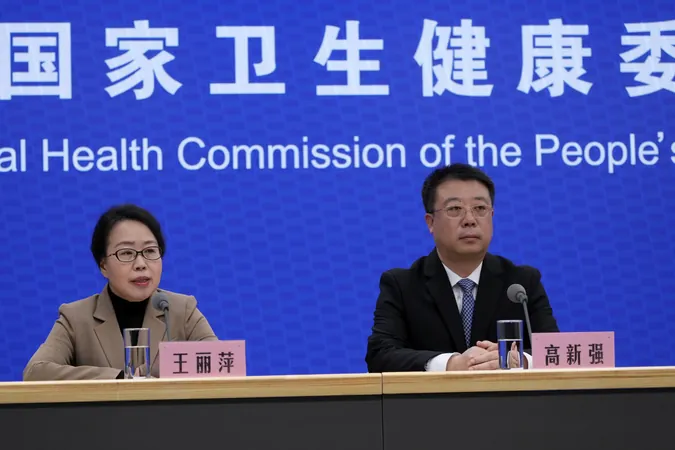
Declining HMPV Infections Bring Relief to Northern China Amid Global Health Concerns
2025-01-12
Author: Jia
Overview of HMPV Infections in Northern China
In a reassuring update, a Chinese health official announced that the rate of infections caused by the flu-like human metapneumovirus (HMPV) in northern China is on the decline. This news comes as global anxieties about potential pandemic outbreaks persist.
Understanding HMPV
HMPV, part of the same viral family as the respiratory syncytial virus, can induce symptoms similar to those of the flu or a cold, including fever, cough, and nasal congestion. While most cases resolve without medical intervention, vulnerable populations such as young children, the elderly, and immunocompromised individuals face the risk of developing severe lower respiratory tract infections.
Research Insights
According to Wang Liping, a researcher at the Chinese Center for Disease Control and Prevention, the virus is not new; it has been present among humans for several decades. Recent reports of increased cases can be attributed to improved detection technologies rather than an actual surge in infections. 'The rate of positive HMPV cases is fluctuating, but we're observing a downward trend in northern provinces, particularly among children aged 14 and below,' Wang noted during a recent press briefing by the National Health Commission.
Public Concerns
Concerns had escalated in light of numerous reports and images circulating online, depicting hospitals overwhelmed with masked patients. Nevertheless, the World Health Organization (WHO) has reported no unusual outbreaks of concern in China or elsewhere. Experts assert that unlike COVID-19, HMPV has been around long enough that many individuals possess some level of immunity; indeed, most children are infected with the virus by age five.
Current Medical Situation
The health officials confirmed that respiratory illnesses currently circulating in China can be traced back to known pathogens. 'We have not identified any new infectious diseases emerging at this time,' said Wang. Though there's a noticeable uptick in patients visiting fever clinics and emergency departments, this figure is generally lower compared to the same period last year. Gao Xinqiang, deputy director of the Department of Medical Emergency Response, stated, 'There is no significant shortage of medical resources.'
Future Projections
Looking ahead, flu infections across China are anticipated to decrease gradually by mid-to-late January, as indicated by commission spokesperson Hu Qiangqiang. While there are currently no specific vaccines or treatments available for HMPV, health experts recommend adhering to basic preventative measures. These include frequent handwashing, avoiding crowded places when possible, and wearing masks in settings with high numbers of individuals.
Conclusion
Overall, while the situation is being monitored closely, the decline in HMPV infections in northern China could signify a positive turning point as the country navigates its approach to respiratory diseases this season. Stay tuned for more updates as public health officials continue to keep the public informed.



 Brasil (PT)
Brasil (PT)
 Canada (EN)
Canada (EN)
 Chile (ES)
Chile (ES)
 Česko (CS)
Česko (CS)
 대한민국 (KO)
대한민국 (KO)
 España (ES)
España (ES)
 France (FR)
France (FR)
 Hong Kong (EN)
Hong Kong (EN)
 Italia (IT)
Italia (IT)
 日本 (JA)
日本 (JA)
 Magyarország (HU)
Magyarország (HU)
 Norge (NO)
Norge (NO)
 Polska (PL)
Polska (PL)
 Schweiz (DE)
Schweiz (DE)
 Singapore (EN)
Singapore (EN)
 Sverige (SV)
Sverige (SV)
 Suomi (FI)
Suomi (FI)
 Türkiye (TR)
Türkiye (TR)
 الإمارات العربية المتحدة (AR)
الإمارات العربية المتحدة (AR)